If you�re looking for a smartphone with a larger display than what the flagships offer, then the LG Optimus G Pro is the phone you should buy. On it�s own too, the LG Optimus G Pro is a quality product and a very good buy. If you were considering the Optimus as your next buy, go for it. However, when put in the company of the HTC One and the Samsung Galaxy S4 and taking into account its current price-tag, the LG Optimus G Pro comes in third. This is mainly because the Optimus doesn�t offer the same design and premium factor of the more expensive One and is more expensive than the Samsung Galaxy S4.
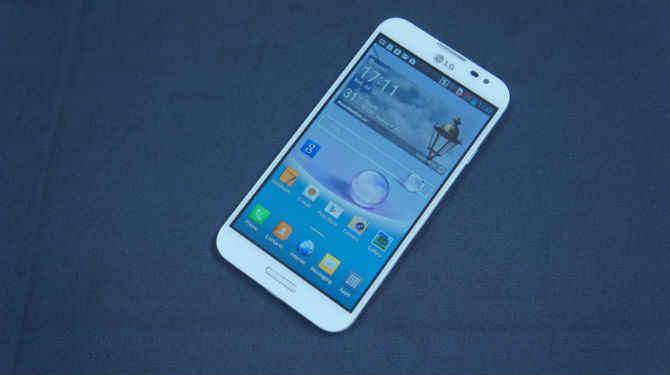
For a more exhaustive look at the Optimus G Pro’s hardware specifications check out the specifications tab. Looking at the specs show that there’s really not much to separate the Optimus G Pro from the other top-end Android smartphones in the market. It sports hardware that’s as powerful as the other phones and therefore, to really understand how it differs from the other smartphones in its segment, we need to look at some other aspects.
Software Features
Looking at the amount of software features in the Optimus G Pro’s arsenal, it feels like LG was desperately trying to prove something. Never has the old cliche of ‘everything and the kitchen sink’ been more appropriate than when it comes to the Optimus G Pro. It offers dozens of additional software features over and above the basic Android set. While most of these features are innovative and interesting, many of these are hidden deep within menus and submenus requiring a user to spend some quality time getting to know the phone.
Instead of listing out all the software features that the Optimus G Pro offers, let me talk about the most interesting ones, the first of which is the ‘Smart Screen’. Smart Screen is LG’s take on Samsung’s Smart Stay and similarly, uses the front-camera to detect if the user is looking at the display. If he is, then the screen remains on but if the user’s gaze shifts from the screen, the display dims and, if a video is playing, it pauses. This feature works exactly like it’s supposed to when watching a video but for some reason, its performance was very inconsistent when it came to anything else. I kept Smart Screen on and browsed the Web, looked through the photo gallery and used Flipboard. However, even when I turned away from the display, more times than not, the screen remained on. But, like I said earlier, the feature works well in the case of videos and almost instantaneously pauses it when you look away.
The Optimus G Pro offers multiple ways to type and I really appreciated the fact that LG took care to address the concerns of users who just don’t find it comfortable to type on such a huge display. As a result, you can set the keyboard to a one-hand use layout by swiping across it, which will make the keyboard smaller and align it to either the left or the right edge of the display. When holding the phone horizontally, you can also ‘break’ the keyboard in half so that each thumb gets easy access to one half of the keyboard. There’s also the LG equivalent of Swype, called ‘Path’, that lets you trail your finger across the letters to make a word. I found Path to be very accurate and by default, you should use this to type stuff out on the Optimus G Pro.



LG also offers a ‘Memo’ feature that lets you scrawl notes on anything that’s on the screen. You can choose the colour and size of the nib and can then save the notes to the gallery. By default, the Memo feature is called up when you press the quick access button on the left side of the phone. This is again, a neat feature but I felt that it would work better with a stylus as I found it difficult to maintain accuracy using my fingers (of course, I also have a terrible handwriting).


The Optimus has an IR emitter under the hood and you can use it to control your media setup and other appliances at home provided you have compatible devices. Using the Quick Remote app, you can easily add devices (that have an IR receiver) by pointing the phone at them and selecting the device from a comprehensive list. Once that’s done, you can use the Optimus G Pro as a universal remote.
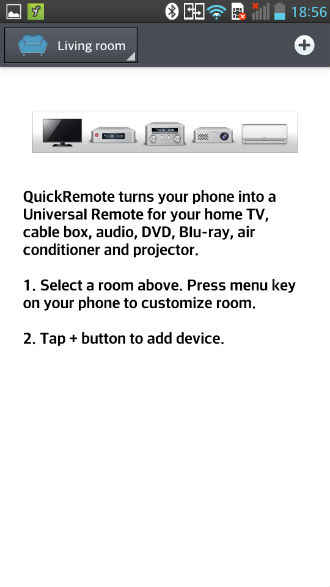
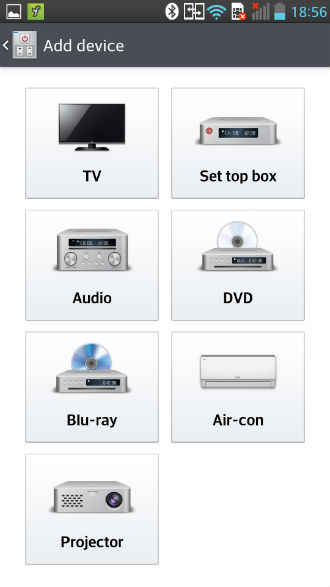
Similarly, you can also use the Optimus G Pro as your go to device in your office. With the help of Smart Share, you can beam and control presentations while also using the screen to view something else. The Optimus G Pro also comes pre-installed with the fantastic Polaris 4 office suite that not only lets you view and edit common MS Office files but also create them.
Like I said, it’s easy to be overwhelmed by all the software features of the Optimus G Pro. Fortunately, LG has peppered the phone with handy little pop-ups that do a decent job of helping you understand a particular feature. If you want to make the best use of the Optimus G Pro, I would advise you to take some time getting to know all its features.
Performance
When it comes to synthetic benchmarks, the LG Optimus G Pro falls a little short of the numbers generated by the HTC One and the Samsung Galaxy S4. However, you can’t really rely on synthetic benchmarks to paint the entire picture when it comes to performance. If you’re interested in checking out what numbers the Optimus G Pro posted in synthetic benchmarks, check out the table below:
In terms of real world performance, the Optimus G Pro is a fantastic performer. Like its two major competitors, the Optimus G Pro is quick and suffers from no slowdown issues. Touch is super-accurate and at no point did I feel like the phone was lagging. Battery life is also really good and the phone lasted for over six hours in our continuous video playback test. This will translate to more than a day of regular use. Call quality was a mixed bag, with voices sounding a little thin over the earphone but fine over the loudspeaker. The phone was, however, able to keep background noise at bay. One thing worth pointing out here is that the Optimus comes with one of the best in-ear headphones I’ve seen bundled with a smartphone.
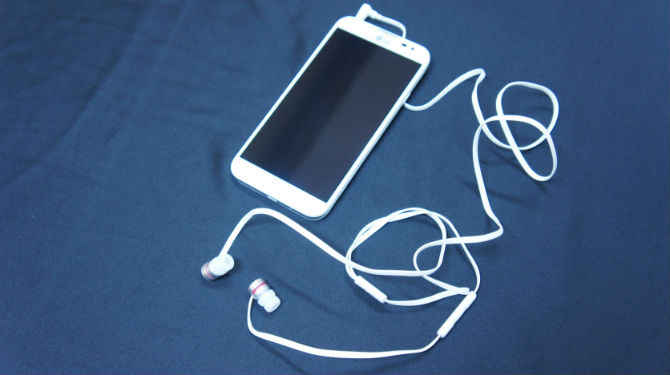
Overall, the LG Optimus G Pro stands right alongside the HTC One and the Galaxy S4 in terms of performance. If you need a reason not to buy the Optimus G Pro, its performance won’t be that reason.
Design & Usability
The LG Optimus G Pro is good looking but not uniquely so. It is available in white, so that’s a refreshing change from the often overused palette of grey and black. The back of the phone features a ‘shifting’ mosaic like design that’s similar to the one found on the Nexus 4. At 9.4mm, the phone is slightly thicker than the Galaxy S4 and the One but is still quite slim. It’s also very light but still heavier than the other two smartphones. The Optimus G Pro primarily uses plastic but the build quality doesn’t suffer much because of it. Once removed, the back panel feels flimsy and is very thin. In comparison to the HTC One, the Optimus G Pro does feel less premium but it’s not a huge drawback.
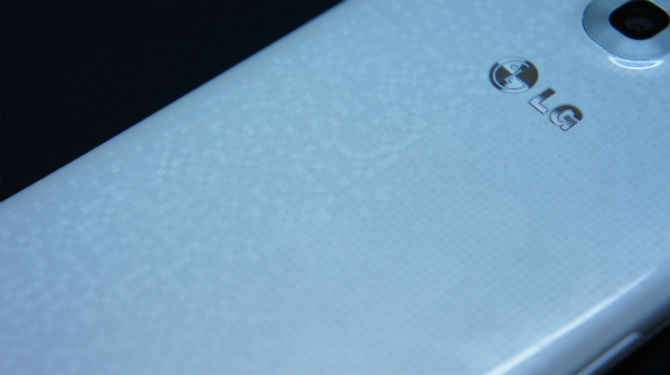
The Optimus G Pro comes with Android 4.1.2 and uses a heavily skinned interface that still maintains the overall design and look of Android to a large extent. If you’re used to the Android interface, then the Optimus G Pro’s UI won’t really offer a steep learning curve. However, it seems strange that LG would choose to use their own UI but not do too much to step out from Google’s shadow. The overall aesthetics of the UI also falls short of what has been done by HTC or Samsung. A prime example of this are the icons that could do with redesign because at their current state, most of them look old and boring.

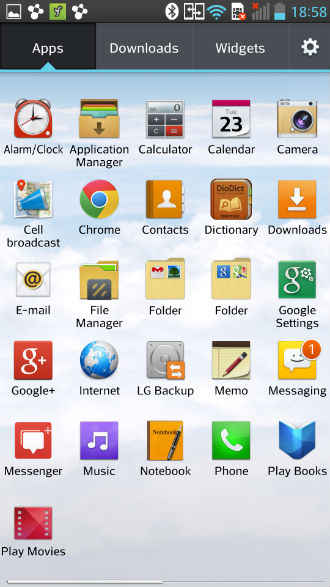
The great thing about the interface is that it’s highly customizable. LG allows users to add shortcuts to the lockscreens, provides six main shortcuts at the bottom of the homescreen that can be replaced (as opposed to only four in the default Android UI) and has an App Drawer within which you can create folders and uninstall downloaded apps directly. Tapping on an app icon during this customization process reveals information on the app such as size and RAM use, which is great. The lockscreen allows for some beautiful looking animations and default themes as well.
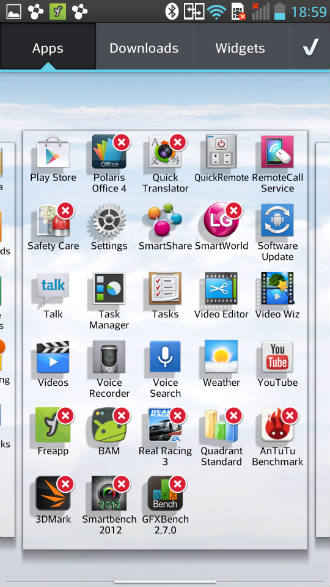
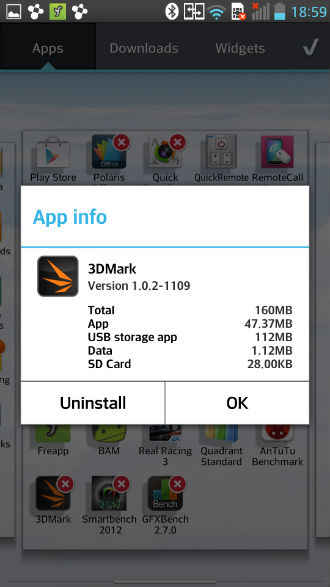

The Optimus G Pro features Q-Slide integration that aids in multi-tasking by letting you work on three select apps at the same time. You can do this by customizing the transparency of the open windows so that you can also view and work with the windows behind. However, this only works with select native apps like the calculator, the calendar and the video player just like on TouchWiz with its Multi-Window feature. You can also add a massive number of toggles and shortcuts to the notifications panel on the Optimus and browse through them by scrolling sideways.

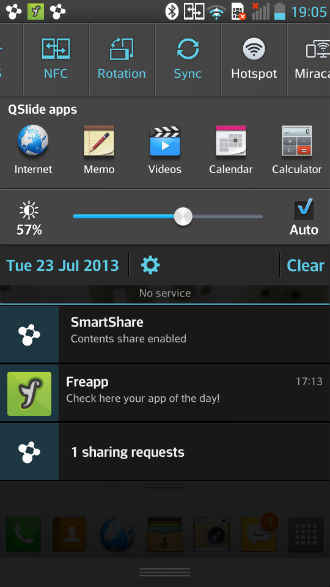
(left) Using the Q-Slide feature to watch a video, browse the Web & use the calculator at the same time.
The 5.5-inch screen on the Optimus is very good and unlike the Galaxy S4, doesn’t look oversaturated. The display works very well with text and I actually spent close to three hours reading a book on the phone without any strain on my eyes. The display is also very well suited for watching videos which you’ll especially notice when playing full HD ones. The phone played all the test videos we threw at it including 1080p MKV videos, MP4 and AVI and thanks to the display, they looked great. The only problem with the display is that it falls victim to glare especially under strong lighting. As a result, it becomes slightly difficult to see what’s on the screen outdoors especially, if it’s really sunny.
As it must have become clear by now, I found the Optimus G Pro to be a very usable smartphone with only some minor things worth cribbing about.
Camera
As megapixel counts of smartphone cameras go through the roof, it’s slightly disappointing to see that camera quality hasn’t proportionally gone up too. It’s the same story with the LG Optimus G Pro’s 13MP shooter. The camera is quite good at shooting photos under good light whether indoors or outdoors. These photos look sharp and the colours aren’t too muted or oversaturated. However, low-light photography turns out to be the Optimus G Pro’s achilles heel and the camera is simply unable to capture details under non optimal lighting. The Optimus G Pro also employs really aggressive noise reduction which is also responsible for loss of details under low light.

Photo shot indoors under good lighting (click on image to enlarge in new window).


Photos shot indoors under low-light (click on images to enlarge in new window).


Photos shot outdoors in daylight (click on images to enlarge in new window).
Like everywhere else, LG has also packed the camera with a ton of additional features. Apart from various scene modes, the Optimus has something called Intelligent Auto, that automatically selects all the right options for clicking the optimal photo. For casual photographers just looking for quick, good looking shots, this feature will come as a blessing. Like on the Optimus G, the camera can also be activated by certain voice commands- in this case, words like ‘Kimchi’, ‘LG’, ‘Cheese’ and ‘Smile’. However, not only do you have to say the words loudly but you also have to run the risk of sounding like a complete idiot while doing so. The Optimus also boasts of the Time Catch Shot feature enabling which will have the camera shoot pictures just before the actual shot, so that you can choose the best shot from multiple options. There’s also a built-in Panorama mode that lets you capture a 360-degree shot.
The Optimus G Pro is good at capturing full-HD videos and the resulting videos look great with crystal clear audio too. There’s also no stuttering or frameskip issues, something that’s often a problem when shooting videos at HD or higher.
Extra video features include Live Effects that lets you add…well, live effects while recording a video. These include adding facial effects like big eyes or a big nose on a subject or adding backgrounds like a sunset or a disco. While these sound neat on paper, they don’t really work well. I found it difficult to keep the live backgrounds constant while focusing on the subject.
Overall, the Optimus G Pro does certain things well in terms of imaging but that’s not one of its strong suits.
Bottomline
It may seem logical to think that the LG Optimus G Pro should compete against the likes of the Samsung Galaxy Note lineup or other phablets on account of its 5.5-inch screen size. But the fact is that since it’s a direct upgrade over the LG Optimus G, it also stands as a viable alternative to current flagships like the Samsung Galaxy S4 and the HTC One. When put in that company and taking into account its current price-tag of Rs. 38,990, the LG Optimus G Pro comes in third. This is mainly because the Optimus doesn’t offer the same design and premium factor of the more expensive One and is more expensive than the Samsung Galaxy S4.
However, if you’re looking for a smartphone with a larger display than what the flagships offer, then the LG Optimus G Pro is the phone you should buy. On it’s own too, the LG Optimus G Pro is a quality product and a very good buy. If you were considering the Optimus as your next buy, go for it.
Are you planning to buy the Optimus G Pro? Let me know on Twitter @postwar or in the comments section below.
